
Anubis, the Greek rendering of Anpu, was identified
with Hermes, Conductor of souls. It was Anubis who opened for
the dead the roads of the other world. He is represented as a
black jackal with a bushy tail, or as a blackish-skinned man with
the head of a jackal.
--- Larousse Encyclopedia of Mythology
If my name makes a mark upon the world, it will probably be because of the discovery of the importance of The Anubis Caves to American prehistory. These are a group of five small caves in western Oklahoma, all of which are filled with a wealth of Old World writing and related petroglyphs. The work on this site has covered fifteen years and still remains incomplete. The true history of the research on this site needs to be set down in chronological order, as it has been distorted elsewhere.
I do not claim to have been the first to see the caves or their contents, as they contain graffiti from the nineteenth century. I do claim to be the first to recognize the Old World relationship and bring it to the attention of others.
Here must be inserted an apology to the author of a report which cannot be referenced in this book. It was published approximately ten years before I first saw the caves, although I did not learn of the reference until 1993. It contained very incomplete sketches of some of the figures in the caves. My reason for the omission is that his title gives the location of the caves. This would betray my promise to the property owner not to reveal their location.
Recognition
This story began on a June day in 1978, when my exploring party was trudging through tall weeds toward the caves, which face west. The caves are shallow shelters eroded out of a sandstone cliffside. With me were John Shuller, of McAlester, Oklahoma, who had long been my best assistant, and Dale Murphy, also of McAlester, at that time a geology student at the University of Oklahoma. Also in the party were Earl and Margaret Syversen of California, who had shared many trips with me, as he and I had been co-authors. Our guide was a local rancher who is a dear friend. He prefers not to be named in order to protect his property, as has been the wish of other ranchers in the area. Our guide wanted to show us a petroglyph of a buffalo with his ribs showing. This was thought to depict a starving animal. Little did we know at the time that this was a distinctive Celtic art form.
The five caves are numbered from south to north in the order that they were seen. Cave One was shallow and not entered on this day as we climbed into the adjacent Cave Two. Three walls of this cave were so covered with script and petroglyphs that one swift glance was cast around the entire circumference to judge what might be of most importance. My gaze focused on an incised panel on the back wall. It was 4 1/2 feet long and very complicated (Fig. 4-1).

Fig. 4-1 The Anubis Panel. Scal drawing by Dr. Clyde Keeler.
The most distinctive feature of the panel was at
the upper right, a canine image with sharp ears and a bushy tail.
I exclaimed, "This is Egyptian!" which greatly amused
all my friends. Our guide chuckled and said, "It's just an
old coyote." But I knew that an Oklahoma coyote would not
be wearing a crown and that he would not have the royal flail
of ancient Egypt standing on his back (Fig. 4-2). A flail is a
whip with a handle.

Fig. 4-2 Photograph (top) and drawing (bottom) of petroglyph of Anubis.
The crown was composed of two tall curved marks like parentheses on each side of his ears, almost tapering together at the top. I had recently seen a similar flail to that on the canine figure in New Orleans at the King Tutankhamen exhibit, which was at that time traveling the country. The crook and the flail are usually shown crossed on the breast of the Pharaohs and the god Osiris as symbols of authority (Fig. 4-3).

Fig. 4-3 The Egyptian god Osiris with crook and
flail. Redrawn from Budge.
Another reason for my insistence that the image was Egyptian was the presence in the cave of both Celtic Ogam and Numidian scripts, a combination which had occurred at two other sites in the area which had Egyptian features.
At the top left of the panel was an anthropomorphic figure wearing a rayed crown, standing at the top of a cube, obviously a Sun God (Fig. 4-4). To the left of the panel was a round window cut into the stone, which may have been a natural opening which had been enhanced. This opened into Cave Three, as did also a smaller peephole below the window. A person could sit on the floor of Cave Two and observe through this foot-wide opening if anyone were approaching Cave Three through a tunnel which leads into it from the north. Syversen was intrigued by this arrangement and left to inspect Cave Three. While Shuller photographed, I traced petroglyphs, and Murphy went exploring.

Fig. 4-4 The Sun God petroglyph.
Syversen called through the yard-wide window for tracing paper and crayons. Although Cave Three was replete with script, he had selected for tracing a 3 1/2 foot long Ogam inscription, carved very clearly on the back wall. His feeling that it was important was correct, as this inscription proved to be the key to understanding the entire site, although two years would pass before this was realized. This inscription would become known as the "Six-Months Inscription" (Fig. 4-5).

G---R-----N 6 M T---D G----N D---S H--M-D M C---T-D
Fig. 4-5 The Six-Months inscription. Transliteration
by Fell.
Murphy had located Cave Four a short distance to
the north. This cave is 12 feet above the ground, within a cliffside.
Murphy shouted that he had found a ship. This had to be seen.
Not being young and agile like him, I had to climb a tree and
be pulled over a sharp stone edge, resulting in badly bruised
ribs. This was a small price to pay to see the walls of almost
solid Ogam writing and a strangely shaped ship, which was recorded.
Returning home with many tracings and photographs of the inscriptions and petroglyphs in the caves, the first task was to submit the Ogam inscription which Syversen had traced to Dr. Barry Fell. It was a great disappointment when Fell said that he thought that the writing was "pseudo-Ogam," probably made by Indians who were trying to imitate the genuine Ogam script present in the area. His reasoning appeared valid, for the inscription contained six straight marks jutting up in a group from the horizontal stemline. Although Ogam alphabets do vary, there is not one which has an alphabetical letter of six marks.
The second task was the study of Egyptian references to identify the canine figure. As remembered, the Egyptian Book of the Dead had illustrations of cows and birds bearing on their backs the royal flail. Further searches revealed paintings of the Jackal-God Anubis with the flail on his back. The jackal is usually in the "couchant" position, crouched with head up. One of these illustrations was from the tomb of Senedgen in the Valley of the Nobles.
The Oklahoma Anubis is very much like a painted image of him on a papyrus of the New Kingdom, which spanned l580-l090 B.C. This papyrus is now displayed in the Bibliotheque Nationale in Paris (Fig. 4-6). He appears in a tableau which represents the course of the sun. He walks beneath the cubical throne of Ra-Harakhte. This form of the Sun God is depicted as a man with a falcon head topped by the sun-disc and the uraeus, the sacred asp. Anubis is shown as very skinny, with erect ears, and on his back he bears a flail.
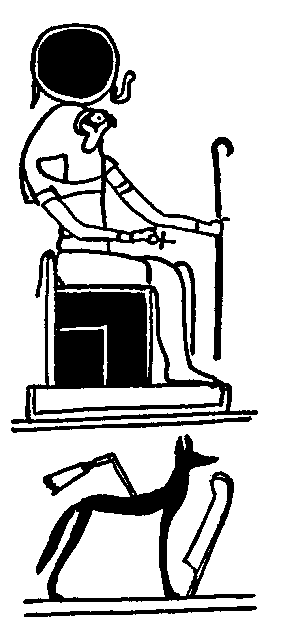
Fig. 4-6 Comparison to Fig. 4-2: Image of Anubis
with Ra-Harakhte. Redrawn by Keeler from Larouse.
Little was it suspected at the time that the connection between Anubis and the Sun God would play such an important role in discovering the true purpose of the Anubis Caves.

The Six-Months Inscription
In June 1980 my fourth visit occurred when Shuller and I returned to the caves. This time we took Dr. John Geiger of Wynnewood, Oklahoma, who delights in tying a red bandanna around his head and laboring in the heat if he is recording petroglyphs and inscriptions. He meticulously traced all the inscriptions in Cave Three, among other duties. I could not give up the idea that the long Ogam inscription was important in spite of its six marks, so I sent a latex mold of it to Fell.
This persistence produced results when in December 1980, Fell wrote that he had deciphered the inscription. In the intervening time he had studied many Ogam inscriptions from Alberta, Canada, and had been able to reconstruct the old Celtic calendar. It was divided into two six-month periods separated by the equinoxes, with each period centered on the solstices.
Fell realized that the six vertical marks above the stemline of the inscription actually represented the numeral "6." He was then able to translate the inscription from the Gaelic language. The wording that was eventually published, in agreement with colleagues, was "The sun (is) six months north, sinks south for space of months equal-number."10 This came to be called the Six-Months Inscription, because its meaning is that the sun is six months in the north and then six months in the south. This was very plainly an indication that whoever wrote the statement had a knowledge of the equinoxes which occur in March and September, near the twenty-first day. The equinox is when the duration of daylight and darkness are exactly twelve hours each.
The Prediction
My fifth visit to the caves was in June 1981, accompanied by Robert and Sharon Wilson of Peoria, Illinois. Fortunately, we had also invited Dr. Jon Polansky of San Francisco. He had visited me the previous October and had seen the plaster cast of the Anubis Panel. On this summer day, an hour before sunset, we were hot and tired. Polansky and I had blithely walked past a coiled rattlesnake hidden in the weeds. Our rancher guide had seen it and quietly killed it while we worked in Cave Four. The blazing sun made the west-facing caves very uncomfortable. Everyone was ready to call it a day, except Polansky, because I had just explained to him the translation of the Six-Months Inscription in Cave Three, which he considered very significant.
Polansky had experience in archaeoastronomy and had discovered ancient calendar sites in California. Because this happened to be the day of the Summer Solstice, the longest day of the year, Polansky suggested that he and I should remain until sunset to see if anything would happen in Anubis Cave Two. He explained that the setting sun might throw some significant shadow on a petroglyph. This resulted in Polansky's now-famous prediction. Looking through the stone window in Cave Three at the Anubis Panel in Cave Two, he said:
"I predict that at the instant of sunset on equinox day, some play of light and shadow from the cave's entrance will be thrown on this panel, perhaps a shadow pointer on one of the sun symbols, which will prove that this is an equinox site."
This was the first time that a translated inscription was used to forecast an event.
Although we climbed into Cave Two and watched the panel until after sunset, we observed nothing of importance. A play of light and shadow was thrown on the ceiling above the panel but not in any significant manner. We decided that it was essential to have an observer at the site during the autumnal equinox. As both of us lived such great distances away from the site, our rancher guide was asked to take photographs of the setting sun, the cave entrance, and the Anubis Panel during the hour before sunset, and to observe whether any of the protrusions near the cave entrance might cast a shadow which would fill any of the sun signs just at the moment of sunset.
On equinox day, September 1981, our rancher friend
made photographs that showed that the large wedge-shaped opening
near the left of the cave entrance did allow a moving shaft of
light to be projected onto the Anubis Panel during the hour before
sunset. A protrusion at the bottom of this opening, which he called
a "knob," cast a shadow which acted as a pointer moving
across the panel and the cube under the Sun God (Fig. 4-8). Just
before sunset, he said it arrived at the large sun symbol, and
light was cast on the figure of Anubis.
Fig. 4-8 Finger points to shadow "knob" at entrance of Cave Two which casts shadow on wall. At extreme right, stone forms another pattern pointing to Cave Three.

The Observation
Near the time of the September 1982 equinox, we began gathering near the site for what was my seventh visit. Alan Gillespie arrived from California. Rollin Gillespie from Washington state and McGlone from Colorado arrived together one day early to check out the procession of the shadow pointer, which they dubbed the "Thumb Pointer" because of its shape. They discovered that a fourth sun symbol could be of great importance. It was a small rayed arc hanging from the bottom right corner of the large "Setting Sun" symbol. Afterwards this new symbol was named the "Vertical Sun" and is also referred to as the "Dangling Sun" or "Sun Number Four." Polansky and I met in Dallas and arrived with photographic equipment.
On the afternoon of the equinox, detailed planning was carried out. Rollin Gillespie and McGlone were to use the still cameras, while Polansky made a time-lapse movie. Alan Gillespie's task was to observe anything unusual in Cave Three. My job was to record any vocal comment of the entire group at the exact second it was made. This proved to be almost impossible because simultaneous observations were sometimes shouted. My log was pages long and later proved to be valuable.
During the last two and a half hours before sunset, all of us watched with amazement as a drama unfolded. The display had been minutely planned by some ancient artist or artists who had a sophisticated knowledge of the movement of the sun. Whether or not the stone pointer within the wedge-shaped opening at the cave's entrance had been enhanced from a natural formation, we do not know. Whoever had incised the Anubis Panel had figured out before he made it, just where the thumb pointer would throw a shadow and had carved the stone panel accordingly. One can see dim layout lines which were used to determine where to position the Anubis image on the panel.
The display began on the wall at the left of the cave entrance just past the buffalo image, when a small triangle of light quivered over yet another small sun symbol consisting of a circle with three downward rays, first noticed by Polansky. It was later realized that this symbol is the Egyptian hieroglyph for "sunshine." After a few moments the spot of light disappeared and a shaft of light traveled across this wall, jumped a gap where the window was located, and appeared on the Anubis Panel as a wedge of light about 18 inches wide at its base, with its pointed end to the left. The rather sharp shadow of the thumb pointer was thrown by the setting sun onto the lower left corner of a cube upon which the Sun God stood, and slowly traveled toward the jaws of the jackal. The Gillespies also noted light and shadow on another inscription of twelve long marks, included in a panel of script near the left side edge of Cave Three. This was to be later known as the "Balance Inscription." They thought that there should be some astronomical significance in these patterns.
While the pointer traveled, certain parts of the panel were in turn illuminated or fell into shadow. The first symbol to be lighted up within the wedge of sunlight was the symbol of the Rising Sun to the left of the Sun God. Next the Sun God himself was illuminated, then his body from feet to neck fell into shadow as the actual sun sank in the western sky. When the sun's edge touched the distant western mesa, the head of the Sun God was in light. At the same time the large Setting Sun came into light. The shadow of the pointer had meanwhile become blunted and rounded as it traveled upward and to the right toward the small rayed Vertical Sun.
At the instant of sunset came the climax when three things happened simultaneously. The shadow of the thumb pointer exactly filled the curve of the Vertical Sun, the head of the Sun God, including the rayed crown, fell into shadow, and the entire figure of Anubis, including his flail, was illuminated. A second later, when the sun had slipped behind the mesa, the entire panel was in shadow. The show was over for another six months. It must be emphasized that the above described alignments happen only at the sunset nearest the actual hour of the equinox. The day before or the day after, the pointer does not travel exactly from corner to corner of the cube, the sun symbols do not fall into light or shadow in a meaningful way, and the pointer does not fill the exact lines of the curve of the Vertical Sun (Fig. 4-10).
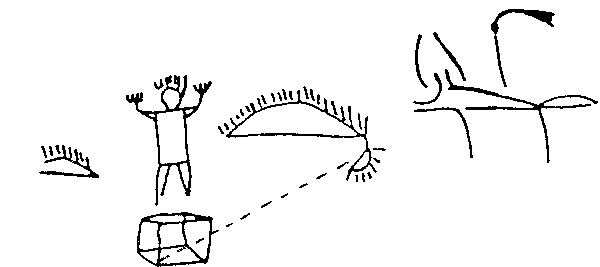
Fig. 4-10 Diagram showing path of shadow pointer during sunset on the day of the equinox. Drawing my Polansky.
The artist or artists who laid out this panel also
understood the ancient Egyptian concept of day and night, of the
sun ruling the sky by day and at sunset sinking into the underworld
of darkness, guarded by Anubis, the God of the Dead. This association
with Anubis is explained more fully in the next chapter.
It is not only in Cave Two in which something happens at equinox. In Cave Three, other plays of light and shadow happened simultaneously with the display in Cave Two. These were not to be understood until later. Alan Gillespie observed that an irregular configuration of stone at the side opening of that cave threw a shadow like the profile of a man's face onto a ruler-like scale with twelve divisions, which was incised above the Six-Months Inscription. This was later called the "Indicator Petroglyph." The nose of the profile seemed to act as a moving marker.

Decipherments by Fell
Still there was much "lab" work to be done between the field visits. As a next step, McGlone and I met at Rollin Gillespie's home in Washington state in February 1983 for a three-day work session. Rollin and his lovely wife Helen live in a two-story glass house built against a cliffside among huge trees, so that there is the impression of being in a secluded nest. We studied all the photographs made in the caves. Our main accomplishment was preparing a large packet which was mailed to Fell. It contained enlarged photographs made by McGlone and my accumulation of five years of tracings and some latex molds made in the Anubis Caves.
Fell must have gone into a work trance to produce the many decipherments for our use at the vernal equinox of 1983, just one month away. Cave by cave, line by line, independently he transliterated and translated the Celtic Ogam script into the Gaelic language. These inscriptions were interspersed in alternate lines with those in the Numidian script of North Africa, used to write the Arabic language. His translations describe and interpret what happens in the caves at equinox, which we had seen but had not understood.
The following translations are presented as they were given to the Anubis Cave Project Team in 1983 before the vernal equinox visit. These were published in 1985 in Volume 14 of the Epigraphic Society Occasional Publications. The original articles, scripts, transliterations, and translations consumed sixty-eight pages of this publication. To save space in this book only the translations are given here. The original reference for each inscription in the above publication is given in the following discussions. These can be referred to for further information on a particular inscription.
According to the decipherments of Fell, in Cave One there were Ogam inscriptions as follows:
"One line, 'G-S-C-T,' (Dwelly, 487 b) and another line 'R-T,' (Dineen, 879 b) preceded a more complicated line, 'B-UI-IA-L IA-N-B H-UI-D-L,' in old Gaelic 'Gesachgt,' 'a magic charm,' 'rat,' 'for good luck,' 'Buail Inpu h-uideal,' reading 'May Anubis wield the flail.'"
If correct, here is verification that the canine figure was indeed Anubis, since his ancient name is Inpu or Anpu. Fell explained the Oklahoma inscription writer must have had contact with Egyptian speakers, since the name is spelled as closely as the Ogam script can reproduce the Egyptian pronunciations.
Another Ogam script in Cave One, disregarding a group of crosses which do not seem to be part of the inscription, according to Fell, reads "T-L-M B-G Ui-G" or "Ata a lam bag uilg" meaning "And may his arm be a hindrance to evil." This seems to be another reference to the use of the flail as the whip of authority.
Fell then turned to the Anubis Panel in Cave Two to translate the two kinds of script on it; Ogam and the Numidian script which was used by the ancient Libyans. The Ogam letters "F-S," rendering the word "fios" are superimposed on the Rising Sun at the upper left of the panel. The next Ogam word, "C-R-N-C," is formed by the fingers and crown of the Sun God, and gives "Carnaich." The next Ogam words are found under the Setting Sun and within the form of the Vertical Sun. These are "B-G-L UI-R -G-IA G-D," forming the words "Baaghal uiru daigea gead." All together these mean, "Instructions for the Druid. In clear weather the projecting piece of rock eclipses the blaze at sunset. This shadow will reach nearly to the jaw of the image of the jackal divinity." This is what one can see happen on the Anubis Panel at each equinox sunset!
The Numidian script, read from right to left, begins even with the legs of the Sun God and continues to the left. Some of it is within the cube itself. A second line of script is to the right of the cube. The letters are "T L-L D-Y-N B-L Y-F-T-N," forming the words "Ata Laila dayan Bel, yafida natans." This translates as "Enact at sunset the rites of Bel, assembling at that time in worship."
This identifies the Sun God as the Celtic Bel and not as the Egyptian Ra as Keeler and I had thought. However, their identities were closely tied in the ancient Near East, as will be explained in the next chapter. Clearly, the caves were a place of sacred rites and worship by the ancient people who made the panel.
The Bel worship theme is carried out further in Cave Number Four. Four lines, of the many lines of Ogam inscriptions within this cave, have been transliterated by Fell as, "G-R-N-G B-L M-N-C M-EA D UI-M-L-OI-EA-B B-L," forming the words "Grian aig Bel Mionach umih ele Lio-Meadh eabh aig Bel," meaning "The sun belongs to Bel - This cavern on the days of the equinox is for the chanting of prayers to Bel."
It was Leonard who noticed a natural stone chair or throne in one corner of this cave, an ideal place for the priest of Bel to sit facing the west and chant his prayers to Bel as the sun sets on equinox day.

Epona, The Celtic Horse-Goddess
As the men on the team worked on the archaeoastronomy, my efforts were centered on the mythology of several anthropomorphic figures in Cave Two. Across the back of the cave, worked in among the various scripts, are a series of figures which are interpreted as deities. These include another image of Bel and Sheela-na-gig, a Celtic goddess figure of complex meaning. These will be discussed in the next chapter. On the right wall, near the cave's entrance, is incised the figure of a woman riding a horse (Fig. 4-14). She rides sidesaddle, with her striped skirt spread out over the horse's flank. The stripes of her skirt are not Ogam script, but she wears a strange headdress which might translate as Ogam. Her head and body are triangular, she has one eye, and her arms reach toward the horse's neck and back.
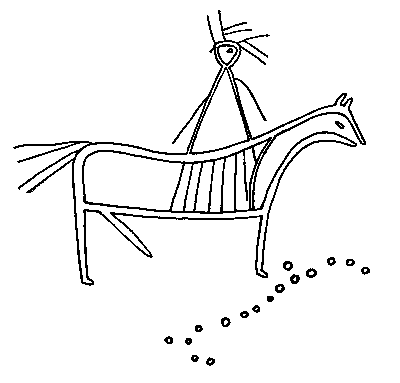
Fig. 4-14 Petroglyph of Epona.
The presence of a horse among ancient Old World petroglyphs in America was no surprise to me, as explained in the chapter, "The Equine Enigma." The 10-inch horse stands quietly, is phallic, has a flying tail, upstanding ears, and an open mouth. All of these features are typical of other horse petroglyphs found in the area. A graceful line of drilled dots underneath him is part of a complicated panel of dotted designs to the right (Fig. 4-15).
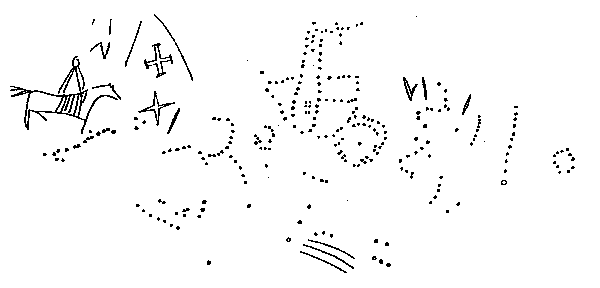
Fig. 4-15 Dot pattern next to Epona. Drawing by
Fell.
Since the equestrienne is but a few feet away and
at the same level as the two previously mentioned divinities with
their strong Celtic overtones, it seemed logical to try to identify
her within the Celtic pantheon. Consulting many references, I
pieced together the background of Epona, the Celtic Horse Goddess.
Originating in Gaul, her cult of worshippers spread to Britain,
Spain, Italy, and eastern Europe, as proved by inscriptions of
the Roman period. The Roman Cavalry units, impressed by the horsemanship
of the Celts, took Epona to Rome. Her image was found on helmets
and above the stables of cavalry barracks. She was considered
to be the protectress of horses and horsemen.
Her name means "The Divine Horse." The word "Epo," meaning "horse" can also be traced to the Celtic word "Ebeul" meaning "foal." She is sometimes shown in statuary with a foal (Fig. 4-16). Most extant images of her show her riding side-saddle (Fig. 4-17). There are 300 stone monuments to her in Gaul.
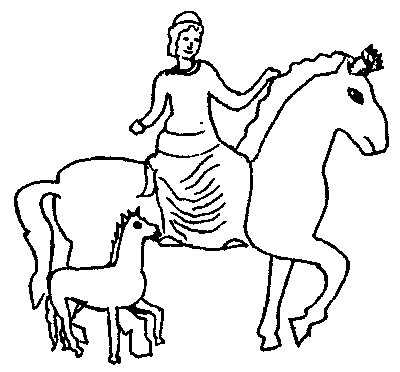
Fig. 4-16 Comparison to Fig. 4-14: Figure of Epona with foal. Redrawn from Braider.
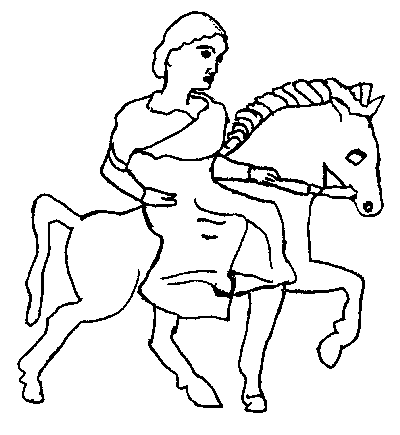
Fig. 4-17 Comparison to Fig. 4-14: Figure of Epona. Redrawn from MacCana.
The horse was apparently very important or even sacred
to the ancient Celts. Some writers believe this idea is exemplified
by the dramatic 350-foot-long horse image cut into the white chalk
of a hill at Uffington in Yorkshire, England. It is still carefully
maintained, a tourist attraction seen best from a plane. It is
believed to have been cut in the first century B.C. and to be
associated with Epona.
Although I had suggested to Fell and other colleagues that this
Cave Two figure did represent Epona, this idea was not accepted
until 1985 while Fell was preparing to publish Volume 14 of the
Epigraphic Society Occasional Publications, which was to
contain many articles on the Anubis Caves. The whole panel containing
Epona and the dot pattern had been carefully traced on transparent
plastic with the assistance of a local rancher, then the huge
piece of plastic had been reduced electronically by Diane Sundberg
of San Francisco to fit onto one page to accompany an article
I had written. The article suggested that the dots might be some
kind of script. Fell suddenly realized the meaning of the panel
of dots to the figure's right.
The dots, said Fell, were Bricren Ogam as shown in the ancient Irish Book of Ballymote. This alphabet showed groups of from one to sixteen dots. The number of the dots represented the standard places of letters in the Ogam alphabet. He said, "All I had to do was count the dots."
His decipherment of the dotted inscription, which contains consonants only, begins, "Boan, the horse-goddess herself, observing the motion of the stars." Fell says that the language is Scottish Gaelic and explains:
"Gloria Farley, with her perceptive analysis of the accompanying carved figure, had already by 1983 recognized the Gaulish Horse Goddess Epona. This determination received complete confirmation after I recognized the Ogam Bricren, for the decipherment yields a detailed statement of the Goddess' astronomical and calendrical sponsorship, as also her name. 'B-N,' Irish 'Boan,' earlier 'Byanu,' is certainly an Ogam transcription of the Gaulish name Epona, since vowels are omitted in Ogam consaine, and 'P' is represented by 'B.'"
The translations of the continuing dots are, according to Fell, "At Safrain the sun is in Scorpio." Safrain, also called Savain and most commonly called Samhain, is the celebration we have inherited as Halloween (All Hallows Eve). This text is under a dot pattern shaped like a scorpion: a rebus. Scorpio is the zodiac sign that is said to rule the end of October and the beginning of November. The text then reads, "Day of the Onset of Winter, Bel retires. Festival of Ripe Corn, Abundance. Day of Ghosts." Fell explained that at Safrain, according to Gaelic tradition, disembodied spirits roamed for one day and one night, and those wishing to avoid bad luck during the ensuing year made offerings of food to the spirits. He said that our modern tradition of Trick-or-Treat is a direct survival of this practice.
Since Fell's translation of the Bricren Ogam dots indicated that Epona was observing the stars, coupled with the fact that Samhain marked the onset of winter, Polansky sensed that here might be another archaeoastronomical pattern to be verified. He asked if I could be in Cave Two at sunset on October 31, and if possible, a few days earlier for comparison. Although the site is more than 600 miles from my home, a trip was planned with Warren Dexter of Vermont to photograph the Anubis Caves and other sites in the area.
We were in Cave Two on October 26, 1986. Nothing
happened which appeared to be significant. Returning at sunset
on October 31, we held our breaths as a cloud that was obscuring
the sun drifted away, just in time. The five-day time lapse had
altered the pattern of light and shadow in the cave. With the
sun halfway behind the mesa which formed the western horizon,
Dexter made clear photographs of Epona and her panel. Epona and
her horse were spotlighted by the sun, with an inverted wedge
of light on her head. A beam of light hit six dots on the Scorpio
petroglyph, which had been translated as "S-L,"
meaning "sun." Polansky concluded, "The
association of the horse goddess with Samhain may thus be a part
of ancient Celtic lore. The spotlight effect on the horse goddess,
as well as her role to observe the stars on Samhain, suggests
a prominent role for Epona during this season."